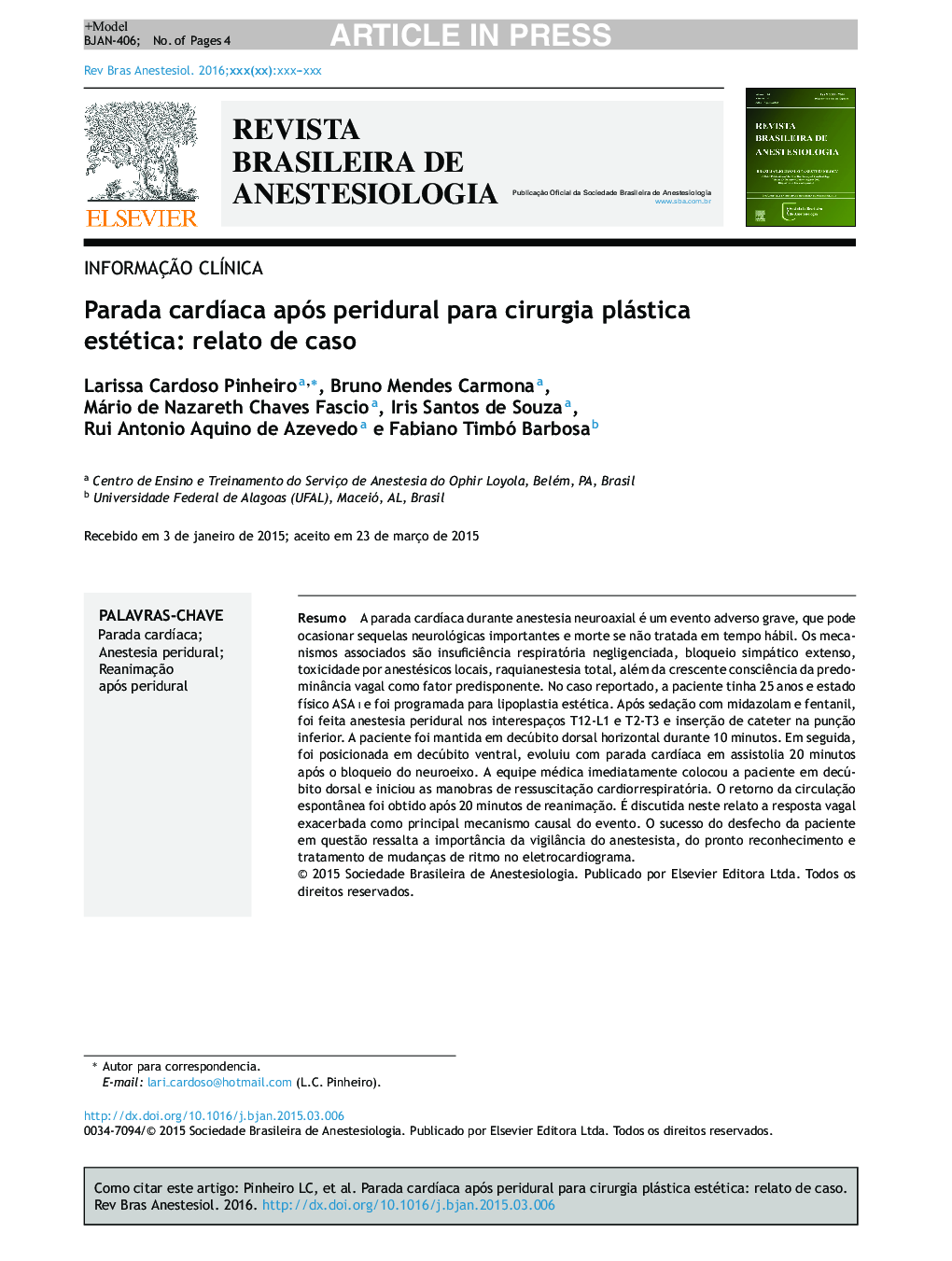| Article ID | Journal | Published Year | Pages | File Type |
|---|---|---|---|---|
| 8611336 | Brazilian Journal of Anesthesiology | 2017 | 4 Pages |
Abstract
Cardiac arrest during neuraxial anesthesia is a serious adverse event, which may lead to significant neurological damage and death if not treated promptly. The associated mechanisms are neglected respiratory failure, extensive sympathetic block, local anaesthetic toxicity, total spinal block, in addition to the growing awareness of the vagal predominance as a predisposing factor. In the case reported, the patient was 25 years old, ASA I, scheduled for aesthetic lipoplasty. After sedation with midazolam and fentany, epidural anesthesia in interspaces T12âL1 and T2âT3 and catheter insertion into inferior puncture were performed. The patient remained in the supine position for 10Â minutes. Then, she was placed in the prone position, developing asystolic cardiac arrest 20Â minutes after the completion of neuraxial blockade. The medical team immediately placed the patient in the supine position and began cardiopulmonary resuscitation. Spontaneous circulation was achieved after twenty minutes of resuscitation. We discuss in this report the exacerbated vagal response as the main event mechanism. The patient's successful outcome emphasizes the importance of anaesthetic monitoring by anesthesiologists, prompt recognition and treatment of rhythm changes on the electrocardiogram.
Related Topics
Health Sciences
Medicine and Dentistry
Anesthesiology and Pain Medicine
Authors
Larissa Cardoso Pinheiro, Bruno Mendes Carmona, Mário de Nazareth Chaves Fascio, Iris Santos de Souza, Rui Antonio Aquino de Azevedo, Fabiano Timbó Barbosa,
